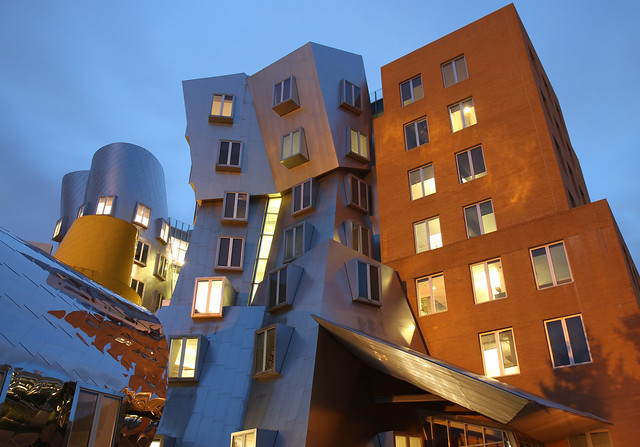Sumaiya Mehjabeen, Mona Mirzaiedamabi, Shengnan Tang
Architects are an integral part of the vast building industry. With responsibilities that include overseeing a building’s design and construction, architects facilitate the aesthetic and functional desires of the client and coordinate design criteria for contractors, consultants, and local authorities. This puts architects into a role that can be described as the project decision maker.
The role of the architect has become strikingly influential, a situation that has gone hand-in-hand with increased controversy. Architects have repeatedly been subjected to disputes and disdain as they try balancing the contradicting needs of clients, contractors and consultants. Moreover, architects are frequently held responsible when something in the building process goes awry. Such problems can be based on aesthetic, structural, financial, or ethical demands.
The AIA (American Institute of Architects) Code of Ethics presents guidelines for its members in fulfilling an architect’s obligations to the public, clients and the profession. However, because of the complexity of ethical issues in architecture and the ambiguity of the code, it can be argued that the code of conduct is not decisive enough to guide AIA members in their professional lives. Because of this, even established architects face difficulties in balancing professional ethical responsibilities with aesthetic pursuits, as the following examples will show.
Ray and Maria Stata Center – Frank Gehry
The Los Angeles-based architect firm headed by Frank Gehry is known for its unconventional, complex, sculptural and often audacious work that arguably helped make architecture trendy in the USA. One of the firm’s most celebrated designs is the Ray and Maria Stata Center at MIT (Massachusetts Institute of Technology), completed in 2004,
The building was soon publicly vilified as a faulty design. Sporting a crinkled form with an undulating facade made of shiny metal and red brick and roofs that collided at different angles, the $300 million building displayed structural and other problems soon after its completion. Problems included persistent leaks, masonry cracks, mold growth, and drainage problems in many parts of the building. In 2007, MIT sued Gehry and the construction companies involved for negligence and design failures.
The MIT lawsuit claimed that the university paid Gehry Partners $15 million to design the Stata Center and then, due to faulty construction, had to pay another firm $1.5 million to rebuild the amphitheater and install a new drainage system. Gehry claimed that Skanska, the construction and development company or its applicable subcontractors were responsible for the failure of the amphitheater drainage and the ensuing damages. Skanska maintained that the problems were due to the architect’s faulty design. They stated that they had warned of design problems prior to construction, but that the architect had chosen to ignore the warnings.
In an interview with The New York Times, Gehry stated, “A building goes together with seven billion pieces of connective tissue. The chances of it getting done ever without something colliding or some misstep are small…. I think the issues are fairly minor, MIT is after our insurance.” He added that “value engineering,” i.e. trimming design elements to cut costs, was the primary cause of the problems. The lawsuit was “amicably” settled in 2007 after the issues were deemed resolved.
In its 2007 version, the AIA Code of Ethics and Professional Conduct does not mention the architect’s role regarding construction issues. A decade later this had changed: in its 2018 version, the code does refer to the architect’s responsibility to guarantee the soundness of a building. In a section called General Obligations the code stipulates:
“Members should employ their professional knowledge and skill to design buildings and spaces that will enhance and facilitate human dignity and the health, safety, and welfare of the individual and the public.”
Despite the new wording, the AIA code fails to define “health, safety, and welfare of the individual and the public”, nor does it indicate how responsibility for such issues should shape the relationship between architects, contractors, and clients. The AIA code’s failure to clearly define the roles and responsibilities of the architect and other stakeholders in a project points to an ambiguity that easily leads to finger-pointing when things go wrong.
House VI – Peter Eisenman
Lawsuits involving well-known architectural firms are perhaps more common that popularity assumed. Peter Eisenman, a “star” architect known for his pioneer role in the Deconstructive architecture movement of the 1980s, has been criticized for his “unusable” residential buildings, including his design for House VI.
House VI, one of Peter Eisenman’s earliest buildings, was built in 1975. Emphasizing his own theoretical ideas inspired by Noam Chomsky’s linguistic theories, Eisenman purposely countered modernist ideas of “form follows function” in a show of force that highlighted new architectural design directions. In doing so, Eisenman applied what he saw as the relationship of words to architectural elements. His emphasis on theoretical aspects of design hindered the functionality of spaces in House VI, creating spaces that are unconventional to live in.
Although the clients later claimed that they loved living in the “poetic spaces” Eisenman had created for them, the building remains known for the architect’s lack of concern for the client’s needs.
One example of the building’s unconventionality is a slot between two beds that extends to the floor, wall and roof: ‘This forced us to sleep in separate beds, which was not our custom’, says Suzanne Frank. The dining table has a column that ‘unequivocally separated diners at the table’. The 1500 sq. ft. house, although small and timber framed, took three years to be completed. It cost twice as much as Eisenman had originally estimated and quoted to the client. At the time of the house’s construction, Eisenman was known almost exclusively as a theorist. His lack of construction experience led to budget overruns and an extended construction period. As Suzanne Frank wrote: “He was somewhat cynical about practical construction matters in general,” and “Working drawings were lacking in specific detail.” She concluded: “From the beginning, we had problems with leakage, and by 1980 they had become serious […] By 1987 the house was already in a frightful state.”
The client never sued Peter Eisenman for damages, but this example is still contentiously debated in the architectural community. The architect built a home in which occupants were forced to live within a work of art. Rather than meeting the clients’ financial and functional expectations, the architect opted to make architectural theories come to life. House VI pits the architect’s autonomy against the clients expectations and raises the question if architects should be allowed to use a client’s project for their own ends. The AIA Code of Ethics does not offer a clear response.
AIA Code of Ethics and the Ethical Role of an Architect
The AIA Codes of Ethics begins by reminding architects that they must “continually seek to raise the standards of aesthetic excellence, architectural education, research, training, and practice”. Architects are responsible for the aesthetic expression as well as the functionality of a building, making architecture different from other forms of art. Architectural works are sometimes appreciated for their aesthetic qualities, while remaining functionally unacceptable to clients, contractors and other stakeholders. If architects cannot agree on a standard of professional responsibility, how can professional codes make a clear case for such standards?
The AIA code of ethics states that “members should be involved in civic activities as citizens and professionals, and should strive to improve public appreciation and understanding of architecture and the functions and responsibilities of architects.” It is worth highlighting these two roles architects take on, that of “professionals” and of “citizens”. While architects have a professional duty to encourage the public to better understand architectural expression; architects as citizens must do their utmost to understand the sum of their responsibilities to the public.



I like that you talked about how architects are an integral part of the vast building industry. I was reading a book earlier and I learned a little bit about the responsibilities of architects. According to what I’ve read, it seems architects could offer quite a variety of services, like higher education building design.
https://arkitex.com/projects/blinn-campus-renovations/
Thanks for your comment! Architects do offer many services and are heavily involved in the building industry. Both technical advances and new social demands will probably mean that the profession will continue to evolve in the coming years.